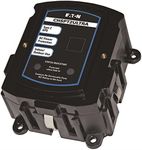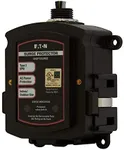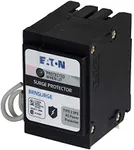Buying Guide for the Best Whole House Surge Protectors
Choosing a whole-house surge protector is an important step in safeguarding your home’s electrical system and all the devices connected to it. These devices are installed at your main electrical panel and are designed to block or divert excess voltage from power surges, such as those caused by lightning strikes or utility grid switching. When picking the right surge protector, it’s essential to understand the key specifications and how they relate to your home’s needs. By focusing on the most important features, you can ensure your investment provides the best protection for your household electronics and appliances.Surge Protection Rating (kA or kV)The surge protection rating, often measured in kiloamperes (kA) or kilovolts (kV), indicates the maximum surge current or voltage the device can safely handle. This is important because it tells you how much protection the device can offer during a large surge event. Lower ratings (10-20 kA) are suitable for smaller homes with fewer sensitive electronics, while higher ratings (40 kA and above) are better for larger homes or those in areas prone to frequent storms. To pick the right one, consider the size of your home, the number of valuable electronics, and your local weather patterns.
Response TimeResponse time refers to how quickly the surge protector reacts to a surge. Faster response times (measured in nanoseconds) mean your devices are exposed to excess voltage for a shorter period, reducing the risk of damage. Most modern surge protectors have very fast response times, but if you have particularly sensitive equipment, look for models with the lowest response time possible. For general household use, any response time under 1 nanosecond is typically sufficient.
Number of Modes of ProtectionModes of protection describe how many pathways the surge protector can defend, such as line-to-neutral, line-to-ground, and neutral-to-ground. More modes mean more comprehensive protection against different types of surges. Basic models may only protect line-to-neutral, while advanced ones cover all three. If you want the highest level of safety for all your appliances and electronics, choose a model with protection on all modes.
UL 1449 CertificationUL 1449 is a safety standard for surge protective devices. Certification ensures the product has been tested for safety and performance. This is important because uncertified devices may not provide reliable protection. Always look for a surge protector that is UL 1449 listed, as this gives you confidence that the device meets industry standards for whole-house use.
Installation TypeWhole-house surge protectors can be installed either inside the main electrical panel or externally. Some require professional installation, while others are designed for easier, plug-in installation. If you are comfortable with electrical work, you might choose a model that is easier to install, but for most people, professional installation is recommended to ensure safety and compliance with local codes. Consider your comfort level and local regulations when deciding which type to buy.
Indicator Lights or AlarmsMany surge protectors include indicator lights or audible alarms to show their status. These features let you know if the device is working properly or if it needs to be replaced after a major surge. If you want peace of mind and easy monitoring, look for a model with clear indicators or alarms so you can quickly check the protection status.















